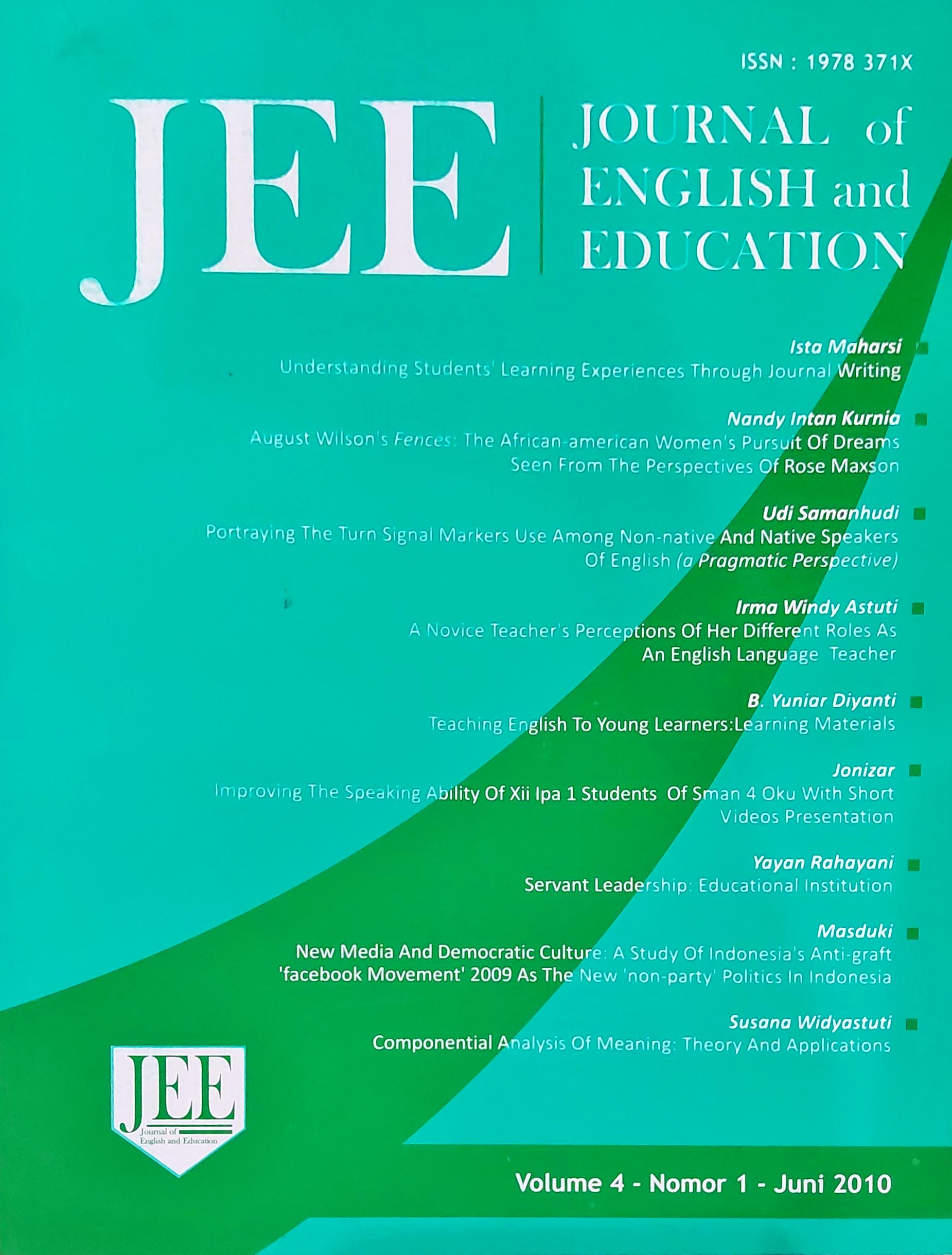Main Article Content
Abstract
It has been known that among many activities, conversation is one activity which is very potential to buildup social relationships and exchange ideas among many people in their community. This fact indicates that conversation plays a crucial role in everybody's life. For a good conversation to take place, the awareness of the speakers to sign that they are finishing and that the listeners begin a response seems to be one of the key points to succeed the conversation activity. This means that the participants, both speakers and hearers, should apply turn signals as indication of willingness to take, hold, or pass the floor during the course of the conversation. This writing is a report of a minor study on turn signals in English conversations done by Indonesians as non-native speakers and Americans as native speakers of English who are found to use English in their conversations. The English conversations analyzed in this study are those conversations taking place in natural contexts like in a lobby of a hotel, a workshop room and a restaurant. Those conversations are recorded, transcribed and analyzed. In order to get the whole picture of both the turn signal markers used and then purposes, a participatory observation was also conducted. Thus, to be more focused, this research is limited to the analysis of markers used by both Indonesians and Americans in turn-taking. The results reveal that both Indonesians and Americans use almost the same markers (words) in turn taking like yeah, well, you know, I think, well yeah, etc. Those markers are applied interchangeably in the turn-taking done by the two groups in the course of the conversations done. In terms of purpose, the use of those markers in turn-taking is mainly to indicate that one of the participants in the conversations (both NNS and NS) wants to take the floor and have the talking turn. The difference found between the two groups was pause (silent) in signaling something in a conversation being done especially when one of them is talking. Indonesian tends to make a longer pause to show, probably, that they are attentive to their colleague having the turn of speaking. This might be done because keep silent when other people are talking is considered polite. Meanwhile, the two Americans involved in this study keep using certain words of signaling such as well. yeah, hmm, during the course of the conversations including when one of them is talking. This seems to be done in order to avoid the sense of being rude or impolite ignoring the one having the turn of talking. Finally, this could be done also to indicate that they are paying attention to what their colleague/s say and keep the conversation runs smoothly. From this, it is clear that, cultural norms what they believe about being polite, also play a role in turn taking activities in a conversation.
Keywords
Article Details
Copyright (c) 2016 JEE, Journal of English and Education

This work is licensed under a Creative Commons Attribution-ShareAlike 4.0 International License.
Authors who publish with this journal agree to the following terms:
- Authors retain copyright and grant the journal right of first publication with the work simultaneously licensed under a Creative Commons Attribution-ShareAlike 4.0 International License that allows others to share the work with an acknowledgment of the work's authorship and initial publication in this journal.
- Authors are able to enter into separate, additional contractual arrangements for the non-exclusive distribution of the journal's published version of the work (e.g., post it to an institutional repository or publish it in a book), with an acknowledgment of its initial publication in this journal.
- Authors are permitted and encouraged to post their work online (e.g., in institutional repositories or on their website) prior to and during the submission process, as it can lead to productive exchanges, as well as earlier and greater citation of published work (See The Effect of Open Access).

